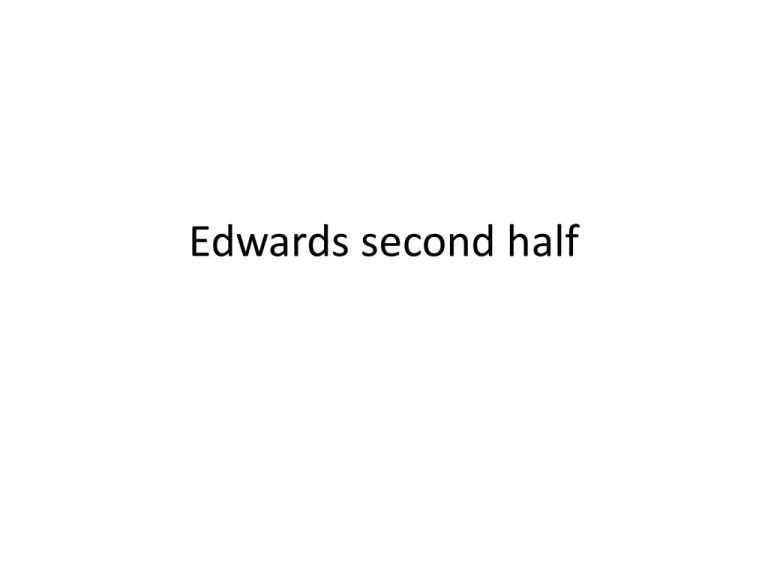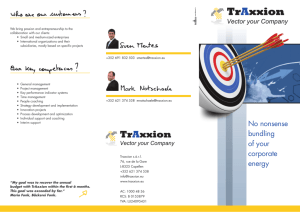slides part II
advertisement

Edwards second half The way this works is that we meet with students in class and out of class and seed groups of 3-5 students with ‘breakthrough’ ideas at the interface of art and science. Then we try to incite student passion. • • • • • • • • The need: The current solution: The hypothesis: The precedents: The potential for IP: Local experts: Global experts: The translation resource demand: • The interests served: • The resource providers: • The roles of art and science: We work through a semester to fashion the student idea into one that meets a major unmet need and forces the students to think far beyond their expertise or education. They then work to develop a kind of business proposal that answers these questions. At the end of each fall semester those students who remain passionate can revieve funding to travel abroad to develop their ideas. They often pass through Paris where they participate in an innovation workshop at Le Laboratoire. Sometimes they travel to other places internationally. What kind of students? 1. 1. Indication of creative potential 2. Facility as a communicator 3. Open-mindedness with regard to cultural differences 4. Ability to follow an idea with passion 6. Students who express an interest in the world and society and issues that transcend student life A community outreach program of these labs is the ArtScience Prize, which encourages high school students to aim their passion for change to frontiers of science through the arts. 1. With the ArtScience Prize students receive seed art and design ideas around an annual theme and receive funding to pursue their passion via short-term idea translations. The ArtScience Prize began in Boston in 2009 in a partnership with the Boston Public Schools – around the theme of neuroinformatics. IDEA 1 2 IDEA 1 2 IDEA 1 2 IDEA 2 2 IDEA 2 2 IDEA 2 2 Ideas of students end up becoming part of larger art and design experiments at Le Laboratoire and through cultural incubation spin out as innovations. What comes of this … 16 16 Since 2002 24 group ideas have grown within the HU Idea Translation Lab. Winter 2003, 3 ideas Fall 2007, 3 ideas Fall 2008, 7 ideas Fall 2009, 11 ideas These have involved about 120 students. Students have learned how to work collaboratively across disciplines to develop an idea that can have major social, cultural or industrial impact. 17 Of these, 11 finished last fall, 6 are in serious development with external resources and several others are in active search for resources. Chances are then about 1/2 that an idea from the ITL will continue to develop following class. 18 Idea Translation Lab Statistics at a Glance Idea MEND Pulmatrix Lebone Le Whif MuseTrek LifeCell Years Investment 7 7 2 2 2 1 $10M $40M $250K $3M $250K $20K Early HU Students Late 4 2 4 2 4 4 1 1 4 1 2 1 1/2 ITL ideas Takes millions 1/4 students run with the idea, 1/10 stick with it … 19 Idea Impact Measures Form of Impact Quantity Employees Exhibitions Field Testing Products 60 5 5 2 20 Over the last few years other Idea Translation Labs have started to emerge – in Boston, Dublin, Paris, Singapore, Dharhan … 21 If innovation is art, innovators are artists, and passion to learn is equivalent to willingness to try. Thank you! 22

